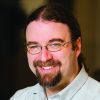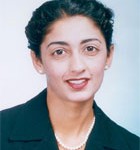Seismic Resilience Group

The Seismic Resilience Group is a team of researchers in the Department of Civil and Mineral Engineering, at University of Toronto. The group undertakes research and graduate study in the field of structural dynamics and earthquake engineering. Several unique research projects are in-progress to improve our understanding on seismic performance of structures and to reduce potential damage from future earthquake events. Currently, five graduate courses are being offered in Structural Dynamics and Earthquake Engineering. This webpage introduces faculty members, courses, testing facilities, and recent projects.
About Seismic Resilience Group
Due to the long return period and significantly shorter observation history, earthquakes are one of the most unpredictable and less-understood natural hazards. Hence, the uncertainties in seismic hazard in the current design code are still very large. This is evident from the siginificant economic and societal losses suffered by several countries with modern seismic design codes, such as the 2011 Fukushima Earthquake in Japan, the 2011 Christchurch Earthquake in New Zealand, and the 2010 Maule Earthquake in Chile. The 2011 Christchurch Earthquake occurred in a region where there was no known active seismic fault. The magnitude of the 2011 Fukushima Earthquake was greater than the design-basis earthquake. Even though there was no direct damage, the 2011 Virginia Earthquake in the U.S. with a magnitude of 5.8 occurred in a region without active seismic events for more than a hundred years.
The series of the latest earthquake events raised awareness on the resilience of critical structures and infrastructures when these structures are subjected to varying seismic hazard. In the current seismic design philosophy, most of the structures are designed to behave in the inelastic range under design-basis earthquakes. Highly safety-critical infrastructure, such as nuclear power plants, are designed with much more stringent criteria, such that radio-active materials do not leak under the design-basis earthquake. For the reliable assessment of the seismic performance of these structures, various structural components, such as reinforced concrete shear walls, soil and foundation systems, mechanical components, etc, should be realistically modelled and the interaction between these components throughout the failure process should be fully captured.
The Seismic Resilience Group at the University of Toronto has been formed to tackle this challenging problem. The constitutive models for reinforced concrete structures developed at the University of Toronto are fully validated against experimental data. The models have significantly impacted the design codes of Canada and other countries. The Structural Testing Facility is equipped with state-of-the-art testing equipment such as the shell-element tester, the ten-element hybrid simulator (under development), and multiple large scale dynamic actuators. The University of Toronto is equipped with a large computer cluster (16th largest in the world in its inception in 2009) which can be used for a large scale modelling of soil and structural system. We are in the process of integrating all these components such that the seismic performance of critical infrastructures under beyond design-basis earthquakes can be more realistically simulated and understood. In addition, several advanced lateral load resistant systems have been developed to minimize damage to structures after earthquake events. To train future engineers, five unique graduate courses are currently offered in the field of earthquake engineering.
Members
| ly | Name | Job Title & Duties | Contact Details |
|---|---|---|---|
 | Bentz, Evan | Vice Dean Undergraduate Professor
| Office: GB 227 (416) 978-4608 evan.bentz@utoronto.ca |
 | Christopoulos, Constantin | Canada Research Chair in Seismic Resilience of Infrastructure
| Office: GB 233 (416) 978-6238 c.christopoulos@utoronto.ca |
 | Kwon, Oh-Sung | Associate Chair, Research Professor
| Office: GB 242A (416) 978-5908 os.kwon@utoronto.ca |
 | Mercan, Oya | Professor
| Office: GB 331 (416) 978-5971 oya.mercan@utoronto.ca |
 | Packer, Jeffrey | Professor Bahen/Tanenbaum Professor of Civil Engineering
| Office: GB 236 (416) 978-4776 jeffrey.packer@utoronto.ca |
 | Panesar, Daman | Professor Erwin Edward Hart Professor in Civil Engineering
| Office: GB 323 (416) 946-5712 d.panesar@utoronto.ca |
Modelling & Simulation
Seismic performance assessment of a structure requires either physical tests or numerical simulations. Physical tests are used when the level of understanding on the behaviour of a structural element is not sufficient enough to develop a numerical model. The results from physical tests are used to develop or calibrate numerical models. Due to the scale of civil engineering structures, such as buildings and bridges, the physical tests are not often used in a structural system level. While a few laboratories in the world can test full scale structures, tremendous resources are required to run full-scale experiments. Thus, numerical simulation is more often used for system-level seismic performance assessment. For high-rise buildings, long-span bridges, or safety critical infrastructures such as nuclear power plants, numerical simulations are probably the only method to evaluate the safety of the structures against earthquake events.
Numerical simulations for seismic performance assessment requires numerical model which can reproduce the behaviour of actual structural elements. At the current level of technical development, however, there are still large uncertainties in the predeicted seismic performance of structures. For example, many researchers and engineers in the world participated in the recent blind prediction contests held in Japan and in the U.S. In the contests, detailed data on material properties, structural design, and input ground motions were provided. Even with all the detailed actual data, the variation of predictions was very large. The large variation in the predicted responses may result from adopted numerical models, modelling assumptions, or seismic performance assessment methods.
To make a breakthrough in the seismic performance assessment method, the Seismic Resilience Group in University of Toronto is actively developing an Advanced Simulation Framework which draws on several decades of expertise in numerical modelling of reinforced concrete structures, unique experimental facilities, tremendous computing power offered by SciNet supercomputer, and integration of these elements through hybrid (experiment-analysis) simulation method.
Modelling of Structural Components
A numerical element of a structural component is the basic building block of a numerical model of a structural system. For reliable seismic performance assessment of a structural system, the numerical element should be able to replicate the behaviour of a structural element, such as stiffness, strength, and energy dissipation, when subjected to cyclic loads up to failure. In general, the development of a numerical model is an iterative process which involves experiments, development of theory based on the experimental results, implementation of a numerical model based on the theory, verification of the numerical model against theoretical solution, and validation of the model against experimental results. The process is repeated until the theory and the numerical model can fully explain the behaviour of a structural element. When new design or materials are introduced, this process is repeated to further develop or calibrate the numerical models.
The Seismic Resilience Group at the University of Toronto continuously focuses on improving the numerical models for different structural components through extensive laboratory testing and numerical simulations. For example, Professors Collins and Bentz have developed theories and numerical models for reinforced concrete structures for a number of decades. The analysis programs based on their theories are one of the most recognized programs in the world. The programs developed at the University of Toronto include VecTor Programs, Response-2000, and Membrane-2012. The programs can fully capture shear deformation and failure, crack development and propagation, bond-slip behaviour of reinforcement bars, temperature effects, pre-stress tendon loss, creep, etc. Furthermore, for experimental validation, full scale models of structural components can be built in the Structural Testing Facility and various experiments can be conducted.
The soil-structure-interaction (SSI) plays a critical role in structure’s response, if the structure is massive and stiff. Due to the huge computational cost in SSI analysis, the SSI has been neglected or simplified with lumped nonlinear springs. For a safety-critical structure, the soil-foundation system is assumed as equivalent-linear material. Professor Kwon is currently developing a numerical method in which soil and foundation systems can be realistically represented in the seismic performance assessment of a structure. His research group is currently focusing on 1) identifying the applicability of nonlinear or equilvalent-linear analysis methods based on large-scale field test results, and on 2) the development of simplified yet accurate time-domain SSI analysis methods.
Advanced Simulation Framework
For a system level seismic performance assessment, all the components should be seamlessly integrated and the interaction between components should be fully considered. The structural components could be in different computer programs such as VecTor programs, Response 2000, OpenSees, Abaqus, etc., or physical specimens. The numerical models may be analyzed with a desktop computer or supercomputer. The physical specimens may be located in University of Toronto’s Structural Testing Facility or in a laboratory at a different institution.
These diverse structural elements can be integrated in a hybrid simulation framework that Professor Kwon has developed for the past years. The Seismic Resilience Group is currently putting large efforts to integrate currently available resources (in-house programs, testing facilities, and supercomputing facility) for most reliable seismic performance assessment. In addition to running nonlinear assessment, the integrated model will be used for real-time or geographically distributed simulation.